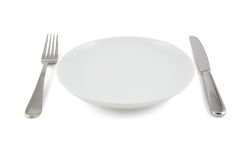Which periodic fasting schemes are the best – Top 8
Intermittent fasting has been gaining popularity in recent years.
To date, several techniques have been developed and studied quite well, each of which differs in compliance scheme, product set, as well as the risk of side effects.
What is interval fasting?

Interval fasting or fasting (from the English fasting) is a special diet scheme in which periods of eating and periods of fasting alternate.
Scientists claim that Interval fasting is good for humans . It triggers autophagy &8212; the process of cell regeneration.
It is also proved that Fasting helps you lose weight , improves the health of almost all body systems and even increases life expectancy.
8 most popular schemes
There are many different patterns of intermittent fasting. Usually, the difference lies in the duration and alternation of time intervals of hunger and eating. It is recommended to try several options in order to select the optimal one, taking into account physical and psychological tolerance. It is also advisable to consult a doctor beforehand to exclude possible contraindications.
1. Method 16/8: fast for 16 hours every day
 Interval fasting 16/8 is a daily fast for 16 hours. In the remaining time (8 hours), it is allowed to take any food, but it is necessary to monitor the total daily caloric content of the diet. Excessive amounts of food can negate the benefits of a diet and lead to undesirable results (obesity).
Interval fasting 16/8 is a daily fast for 16 hours. In the remaining time (8 hours), it is allowed to take any food, but it is necessary to monitor the total daily caloric content of the diet. Excessive amounts of food can negate the benefits of a diet and lead to undesirable results (obesity).
The technique was proposed by fitness expert Martin Berhan.
The described eating regime can be repeated any number of times a week: from 1-2 to constant observance. It all depends on the individual tolerance of such fasting.
The technique has such proven properties:
- Decline body weight.
- Normalization Blood plasma glucose levels.
- Lowering blood pressure.
- Prevention atherosclerosis.
- Prevention of malignant diseases.
- Magnification life expectancy.
The essence of the method is simple. It is simply necessary not to take food for about 16 hours a day. For example, you can eat anything from 12-00 to 20-00, and in the remaining time (most of which is sleep) you can fast.
During fasting, you can take various drinks: water (including mineral water), tea or coffee without sugar. Carbonated and other beverages rich in dyes and preservatives containing sugar should be discarded.
It is important to give preference to "healthy food": fruits and vegetables (apples, bananas, pears, peaches, oranges, broccoli, tomatoes and cucumbers, leafy greens, cauliflower), berries, cereals (oats, buckwheat, rice), fats (olive and coconut oils, avocado), protein products (chicken, beef, eggs, nuts).
2. More gentle schemes: fast for 10, 12 or 14 hours a day
The 16/8 technique may not be available to many people due to a fairly long period of abstinence from food (16 hours). However, there is a simpler analogue – fasting for 10, 12 or 14 hours a day.
According to foreign research , even a minor fasting period (10 hours) it is able to put the body into the "destruction of fat reserves" mode and contribute to a significant decrease in body weight.
Gentle schemes are ideal for beginners, since most of the time intended for fasting coincides with sleep and the feeling of discomfort (hunger) is practically not felt.
The most popular example is fasting from 7-8 pm to 7-8 am. Of course, as with the 16/8 diet, it is necessary to limit the daily calorie intake and give preference only to natural dishes.
3. Method 5/2: Limit your diet to 2 days every week
 Diet 5/2 is eating the usual food 5 days a week. Then, for the remaining 2 days, food intake is limited to 25% of the daily requirement, which is approximately 500 calories for women and 600 calories for men.
Diet 5/2 is eating the usual food 5 days a week. Then, for the remaining 2 days, food intake is limited to 25% of the daily requirement, which is approximately 500 calories for women and 600 calories for men.
2 days of fasting do not have to follow each other, any variation is allowed during the week. Experts recommend setting aside Mondays and Thursdays for fasting. It is believed that this way the body adapts better to the diet.
The main benefits of the diet are:
- Prevention atrophic pathologies of the brain, toxic effects of various substances on the nervous tissue.
- Prevention atherosclerosis.
- Decline body weight.
- Prevention type II diabetes mellitus.
- Strengthening immunity.
- Improvement of the flow bronchial asthma.
In just 12 weeks of regular adherence to the technique, body weight decreases by an average of 5 kg, the volume of adipose tissue in the body by 3.5 kg. The concentration of the hunger hormone (leptin) also decreases by 40%, C-reactive protein almost completely disappears, dyslipidemia is corrected (LDL and LDL drop by 20%, HDL increase).
In order to increase the safety and effectiveness of the diet, it is necessary to consume only natural products and monitor the total daily energy value of the diet.
Scientists recommend with this type of interval fasting, take food not in its pure form, but in the form of various dishes:
- Vegetable salads. Perfect for: cabbage, broccoli, carrots.
- Natural yoghurts with berries (strawberries, strawberries, blueberries).
- Baked or hard-boiled eggs.
- Lean meats (chicken, turkey).
- Fried fish (preferably without oil).
- Rice with cauliflower.
- Vegetable soups.
Water, tea or coffee without sugar – no restrictions.
No major studies have been conducted on the 5/2 scheme. All the positive properties are based on the fact that the diet is a classic kind of interval fasting.
4. The "Eat-Stop-Eat" method: give up food for 24 hours once or twice a week
The Eat-Stop-Eat diet is one of the most severe protocols of intermittent fasting, in which it is necessary to fast for 24 hours 1 or 2 times a week. The scheme was introduced by fitness expert Brad Pilon and has become extremely popular in just a few years.
For better tolerance, it is recommended not to eat anything from dinner of the current day to dinner of the next day. During the fasting process, it is allowed to take any low-calorie drinks (tea or coffee without sugar, plain or mineral water).
The main drawback of the diet is an extremely long period of fasting, which is not suitable for most people, especially beginners. It is recommended to start with simpler schemes: 16/8 or 14/10.
Useful properties are almost similar to scheme 16/8: weight loss (mainly due to fat deposits), prevention of malignant neoplasms, correction of lipid and cholesterol metabolism in the body, an overall increase in life expectancy due to the suppression of chronic inflammatory processes.
5. Fasting every other day: a day to eat, a day to fast
 Fasting every other day is a type of cyclic fasting, in which there are no restrictions on eating on the first day (it is advisable to give preference to natural products and observe the total recommended daily calorie content), and the next day you need to eat about 20-25% of the basic daily energy value (about 500-600 calories).
Fasting every other day is a type of cyclic fasting, in which there are no restrictions on eating on the first day (it is advisable to give preference to natural products and observe the total recommended daily calorie content), and the next day you need to eat about 20-25% of the basic daily energy value (about 500-600 calories).
During fasting, it is allowed to take any drinks that do not contain calories. The described scheme can be repeated any number of times. Food can be taken at any time of the day, this will not affect the benefits in any way and will not affect the overall health of the human body.
The creator of the diet is health specialist Krista Varadi. It was under her leadership that a huge number of research that have proven the high efficiency of this power supply system. The main positive effects include the following:
- Reduction body weight.
- Prevention type II diabetes mellitus and other pathologies of the glycemic background.
- Improvement Cardiovascular health. There is a positive trend in relation to pathologies such as chronic heart failure (only grades 1 and 2a), myocardial infarction, coronary heart disease, hypertension.
- General promotion life expectancy.
Fasting "every other day" is not suitable for beginners, as well as people suffering from mental disorders.
6. The Warrior's Diet: starve during the day, eat at night
The Warrior's Diet is the development of a former member of the Israeli special forces, Ori Hofmekler. He was inspired by the incredible endurance of the Roman legionaries, who participated in battles and trained almost all day, and ate food in the evening and at night.
The essence of the diet is fasting for 20 hours, and then eating before going to bed. The qualitative and quantitative composition of food does not matter much. During fasting, small snacks are allowed (raw vegetables or fruits, tea or coffee without sugar, plain water, hard-boiled eggs).
Numerous scientific studies have noted the benefits of this type of interval fasting:
- Reduction body weight.
- Improvement Brain health. The diet improves the cognitive sphere (thinking, attention, memory), is effective in preventing neurodegenerative pathologies (Pick's disease, Alzheimer's disease, Parkinson's disease).
- Oppression chronic inflammation, prevention of autoimmune disorders, increased life expectancy.
- Prevention type II diabetes mellitus.
- Prevention atherosclerosis.
The main disadvantages of the warrior's diet are the long time it takes for the body to get used to a radically new lifestyle. Not every modern person is able to give up the usual food for a 20-hour period of time.
7. FMD Diet: Eat little 5 days a month
FMD Diet (Fast Mimicking Diet or a diet simulating fasting) is a variant of periodic fasting developed by one of the employees of the University of Southern California. The methodology has a massive evidence base.
The essence of the diet is to limit the calorie content of the diet for only 5 days a month. The composition of the diet during the period of refusal to eat is as follows:
- Day 1. Daily calorie content is 54% of the recommended value (about 1090 kcal). The percentage of nutrients: proteins – 10%, fats – 56%, carbohydrates – 34%.
- Day 2-5. Daily calorie content is 34% of the recommended value (about 725 kcal). The percentage of nutrients: proteins – 9%, fats – 44%, carbohydrates – 47%.
To achieve the maximum possible positive effect, fasting should be repeated regularly. The ideal option is every month.
Main useful properties of the method:
- Reduction body weight.
- Prevention type II diabetes mellitus.
- Prevention atherosclerosis.
- Reducing the risk of developing autoimmune pathologies. Proven efficacy against Crohn's disease, ulcerative colitis, systemic lupus erythematosus and multiple sclerosis.
- Slow Down aging and the likelihood of "senile" abnormalities.
- Prevention of malignant neoplasms.
A distinctive feature of the diet is the presence of a certain list of recommended products that do not contain gluten:
- Nuts and nut bars with flax seeds, almonds, peanuts, coconut, honey, macadamia nut oil;
- Seaweed (seaweed);
- Soups (tomato, mushroom);
- Herbal teas (mint, hibiscus, karkade);
- Dark types of chocolate;
- Olives;
- Fresh herbs (dill, coriander, parsley, onion);
- Fresh juices based on vegetables and fruits;
- Whole fruits and vegetables.
It is also necessary to minimize the consumption of animal meat, bakery and confectionery products.
The technique is well tolerated and has a low incidence of side effects.
8. Spontaneous skipping of meals
 The easiest way to "interval fasting" is to spontaneously skip any meal.
The easiest way to "interval fasting" is to spontaneously skip any meal.
You can skip any meal during the day (for example, on the first day – dinner, on the second day – lunch, etc.).
With partial refusal of food, the daily calorie content of the diet decreases, which, at least, has a beneficial effect on body weight.
It is recommended to skip meals when there is no particular craving for food due to various reasons.
The diet is well tolerated and has practically no contraindications (exceptions are pregnancy, breast–feeding, diseases of the digestive system with damage to the mucous membranes). This option is ideal for beginners.
Are all methods safe?
 It is necessary to understand that fasting is always a stressful situation for the body. And stress is not always safe. Therefore, there is a certain range of contraindications for all diets:
It is necessary to understand that fasting is always a stressful situation for the body. And stress is not always safe. Therefore, there is a certain range of contraindications for all diets:
- Low body weight (BMI less than 18.5).
- Active tuberculosis of any organ.
- Type I diabetes mellitus (caused by direct damage to the islet apparatus of the pancreas).
- Thyroid pathology and hyperthyroid background.
- AV blockade of II and III degrees. Tachysystolic forms of arrhythmias.
- Chronic renal, hepatic or cardiac (grade 2b-3) insufficiency.
- Thrombophlebitis or "critical" thromboembolic complications in the anamnesis (PE).
- Arterial hypotension.
- Gastritis. Peptic ulcer of the stomach and duodenum. Cholelithiasis.
- Age less than 14 or over 75 years old.
The smallest list of contraindications is noted in the FMD diet. Therefore, it is the safest for the human body. Also, the 16/8 or 14/10 interval fasting options are perfect for beginners. The usual skipping of meals is well tolerated.
During fasting, side effects may develop due to low calorie intake and nutrient deficiency:
- Weakness;
- Decreased physical and mental performance;
- Dizziness and fainting.
With the development of adverse reactions, it is necessary to temporarily abandon the fasting regimen and consult a doctor.
In addition, according to research, periodic fasting is less beneficial for women than for men. This is due to the peculiarities of the female body. More gentle fasting schemes are suitable for women .
General Tips
 Regardless of the chosen scheme, a number of simple rules must be followed to improve performance:
Regardless of the chosen scheme, a number of simple rules must be followed to improve performance:
- Accounting for the caloric content of the diet. With any type of fasting, the amount of calories consumed per day should not be higher than recommended. To calculate, you can use the following formulas: men = 88.36 + (13.4 x weight, kg) + (4.8 x height, cm) – (5.7 x age, years); women = 447.6 + (9.2 x weight, kg) + (3.1 x height, cm) – (4.3 x age, years).
- Drinking enough water. You should never limit your intake of water. Abandon the methods of &171;dry&187; fasting.
- Cheer yourself up. In case of extreme hunger, it is necessary to try boost your mood and get distracted (going to the cinema, walking in the park, etc.).
- Focus on saturation. You should eat foods that are low in calories, but cause a quick feeling of filling the stomach (raw vegetables and fruits, grapes, melon, popcorn).
- Using spices. They will allow you to give any dish a more pleasant taste and better satisfy your hunger. Perfect for: spices, vinegar, herbs and garlic in any form.
- Following a balanced diet. The human body must receive sufficient vitamins, macro- and microelements, and fiber to maintain its vital functions. A balanced diet is the basis of a healthy lifestyle!
Conclusion
- Thus, there are many ways of intermittent fasting. Some are suitable for beginners, others only for experienced ones.
- Each option differs in the method of compliance, the range of useful properties and contraindications.
- It is recommended to try different types and choose the most suitable one, taking into account psychological and physical tolerance.
- Regardless of the methodology, it is necessary to focus on safety. It is extremely important to consult a doctor beforehand in order to exclude possible contraindications; respond competently to the appearance of side effects, choose only natural and high-quality food.





